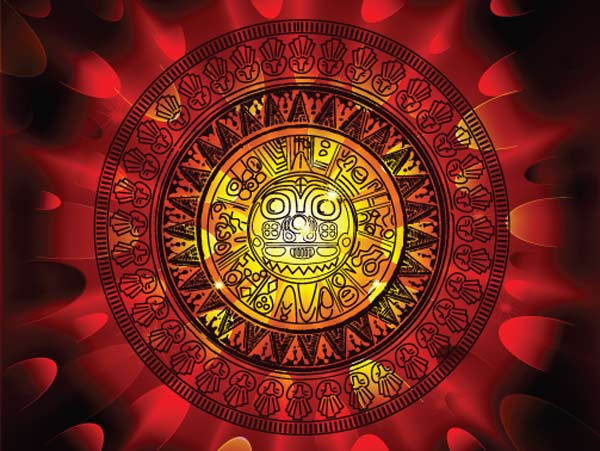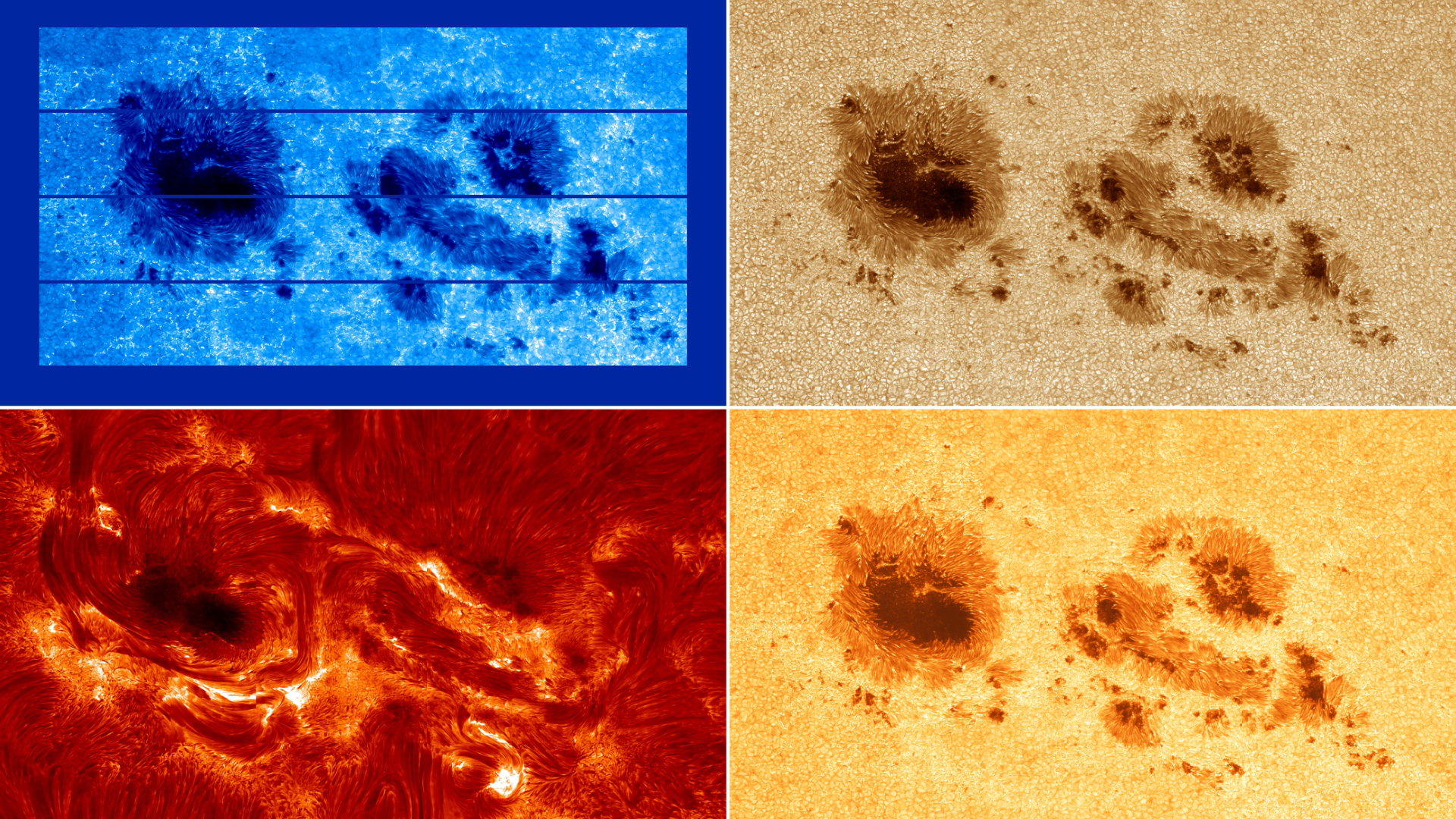11/11/11: How Friday Is Tied to the Mayan Apocalypse

Friday's numerical date is written out as 11/11/11. And for some people, that number sequence is more than a coincidence or inevitability — it's a spiritual signal linked to 2012 Mayan prophecies of both doom and spiritual renewal.
Nov. 11, 2011 mythologies are pervasive on New Age corners of the Internet, with believers suggesting that 11/11 numerical sequences are signals from angels or numbers with hidden meanings. Even people who think little of numerology are finding meaning in the day: The Orlando Sentinel reports that Walt Disney World will host 11 weddings on 11/11/11.
But perhaps the most intriguing 11/11/11 mythology to pop up is the number's link with the supposed 2012 Mayan Apocalypse. The ancient Mayan long-count calendar ends on Dec. 21, 2012, and some people believe that this date will usher in a new spiritual era, or even doomsday. Nov. 11, 2011 most likely became linked with Dec. 21, 2012 when believers noticed that the U.S. Naval Observatory had set the exact time of the 2012 winter solstice for 11:11 Universal Time on Dec. 21, according to John Hoopes, a scholar of Maya history at the University of Kansas.
"It's essentially based on the notion of synchronicities," Hoopes told LiveScience. Synchronicities are meaningful coincidences, he said. And while everyone has a psychological tendency to find minding in random patterns the subcultures that believe in 2012 mythology tend to be those that dabble in psychedelics and cannabis, drugs that increase feelings of synchronicity.
"If it seems like the 2012 mythology was thought up by people on drugs, it's because it was," Hoopes said. [The History of 8 Hallucinogens]
The meaning of 11
Indeed, the U.S. Naval Observatory now lists the official time of the 2012 winter solstice, when Earth's tilt is angled as far away as possible from the sun, at 11:12 Universal Time on Dec. 21. This has not stopped 2012 believers from focusing on the 11:11 time.
Breaking space news, the latest updates on rocket launches, skywatching events and more!
In part, this is because 11:11 mythology has been floating around online for some time. The website 1111spiritguardians.com holds that noticing a clock when the time is 11:11 is a signal from "1,111 fun-loving Spirit Guardians, or Angels." Other times, such as 12:12, 10:10 or 12:34 are messages, too, according to the site.
These numbers may seem special to people because they stick in our minds, Hoopes said. No one remembers looking at the clock when the numbers don't make a pattern.
"People are more likely to remember 11:11 than they are, say, 4:29 or 6:53 or 3:17 or something like that," Hoopes said.
Psychologists call the temptation to find patterns in random data pareidolia. This phenomenon is also responsible for visions of the Virgin Mary in toast or other objects.
Once you accept 11 as a meaningful number — whether because it looks so symmetrical or because you keep seeing it on your digital watch — it's easy to find the number everywhere. One article on the website 2012rising.com ties together the Mayan calendar, the terrorist attacks of 9/11, the average length of polarity reversals of the sun's magnetic field, and the author making post number 1111 on a 2012 message board.
"The sun having an 11.11 year cycle, the winter solstice of 2012 falling at 11:11 and people all over the world finding themselves bombarded with 11's [sic] just as science is predicting some kind of majestic solar event at the peak of this current cycle seems more than coincidence," the author writes.
(Solar activity does indeed peak about every 11 years, potentially disrupting satellite communications, but according to NASA, there is no special risk associated with 2012 and the peaks are not expected to be different than previous historical peaks.)
11/11/11 Predictions
With all these 11s to pluck from, 11/11/11 predictions are flowing fast. New Age adherents have predicted everything from end-of-world scenarios to the ushering in of a new spiritual era.
"The buzz on the net and on Twitter and elsewhere is that 11/11/11 is the unofficial start of the 2012 metaphysical year," Hoopes said.
Even moviemakers are cashing in on the action, with a horror/thriller movie titled "11-11-11" set for release on the date. The plot of the movie centers on a scary, mysterious force that will enter the Earthly realm at 11:11 on 11/11/11.
Non-commercial predictions tend to be more positive than doom-centered, however. The number 11 is seen as a signal that all people are one, for example, and the date is more likely to be seen as an end to greed and disconnection than as an end to humanity. That puts 11/11/11 prophets in a different class than those such as Harold Camping, who predicted a Biblical doomsday in late October.
What the Mayas would say
Whatever modern people may think of the Mayan calendar, it's not clear what, if any, significance the Maya would have placed on the end of their long count of days, Hoopes said.
"The reality is that the Mayas did keep track of large cycles of time, and there is a large cycle of time that began in 3013 B.C. on our calendar, and there are reasons to think that the cycle reaches a significant number on Dec. 21, 2012," Hoopes said.
But what that might have meant to the Mayas is an open question, Hoopes said. The Mayan people tended to see time as cyclical, he said, with important events echoing themselves on corresponding dates in a cycle. In that case, he said, the end of the calendar might have been seen as a new beginning.
"But it's fair to say there's disagreement about that, and some of the leading Maya scholars are skeptical," Hoopes said.
Notably, Hoopes said, Mayan end-of-the-world prophecies don't appear in the historical record until after the group made contact with Christian missionaries — a bunch of people with their own strong beliefs about the end of days.
In fact, astrological end-time predictions were popular in the 1500s, when Franciscan missionaries began voyaging to the New World. In 1524, Hoopes said, an astrological conjunction of Saturn and Jupiter spurred fears of a second Great Flood, touching off panic.
"They were actually preparing for this catastrophe by buying real estate on high places and by stocking up on whatever the 16th-century equivalent of duct tape and bottled water was," Hoopes said.
Biblical doomsday predictions would have certainly made it to Mayan ears, Hoopes said. In other words, Mayan prophecies simply appropriated Christian theology.
"The world for the Mayas really did end in the Spanish conquest," Hoopes said. "So they incorporated that into their explanation of what was happening to them."
The Maya and modern times
The Mayan calendar may resonate today simply because the ancient Maya are seen as an exotic culture with an advanced spirituality, Hoopes said. A century ago, he added, people believed the same thing about Indian and Chinese culture. [Why People Look Forward to the End]
What keeps the mythology alive, today, however, is the Internet and social networking, Hoopes said. In that way, he added, believers in a 2012 transformation of consciousness might be right.
"The world is changing because of this transformation of consciousness through the digital network," he said. "I would not be surprised if in the future people looked back and said, 'Oh yes, it was 2012 when all that happened.'"
Editor's Note: This article has been updated to correct the date of the beginning of the Mayan calendar. The date is 3013 BC, not 3012.
This story was provided by LiveScience, a sister site to SPACE.com. You can follow LiveScience senior writer Stephanie Pappas on Twitter @sipappas. Follow LiveScience for the latest in science news and discoveries on Twitter @livescience and on Facebook.

Stephanie Pappas is a contributing writer for Space.com sister site Live Science, covering topics ranging from geoscience to archaeology to the human brain and behavior. She was previously a senior writer for Live Science but is now a freelancer based in Denver, Colorado, and regularly contributes to Scientific American and The Monitor, the monthly magazine of the American Psychological Association. Stephanie received a bachelor's degree in psychology from the University of South Carolina and a graduate certificate in science communication from the University of California, Santa Cruz.

